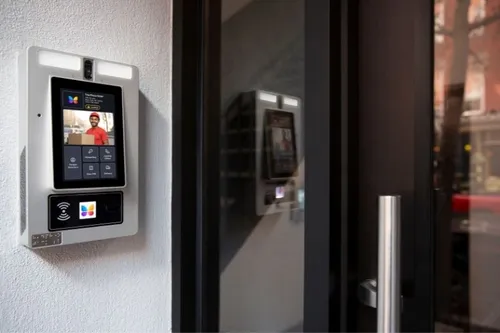Electronic Access Control Systems: These systems use electronic locks, key cards, or biometric identification to grant access to authorized personnel.
Locks and Keys: Traditional locks and keys can be used to control access, but they can be lost, stolen, or copied, making them less secure.
Access Codes: Codes can be used to grant access to authorized individuals, but they can be shared or compromised, reducing their effectiveness.
Security Guards: Physical security guards can be stationed at entry points to monitor and control access.
Gates and Barriers: Physical barriers, such as gates and bollards, can be used to restrict access to a building or area.
Benefits of Controlled Access
Improved Security: Controlled access helps to prevent unauthorized entry, reducing the risk of theft, vandalism, and other security breaches.
Increased Efficiency: Electronic access control systems can streamline the entry process, reducing the need for manual key management and increasing the speed of entry.
Enhanced Safety: Controlled access can help to prevent accidents and injuries by restricting access to areas that may pose a risk to unauthorized individuals.
Compliance: Controlled access can help organizations comply with regulatory requirements and industry standards for security and access control.
Types of Controlled Access
Residential Buildings: Controlled access can be used to restrict entry to residential buildings, providing a secure and private living environment for tenants.
Commercial Buildings: Controlled access can be used to restrict entry to commercial buildings, protecting valuable assets and sensitive information.
Government Buildings: Controlled access can be used to restrict entry to government buildings, ensuring the security and safety of personnel and sensitive information.
Industrial Buildings: Controlled access can be used to restrict entry to industrial buildings, protecting equipment, materials, and personnel.
Conclusion
Controlled access is an essential security measure for buildings, providing a secure and efficient way to restrict entry to authorized individuals. By understanding the different types of controlled access and their benefits, organizations can make informed decisions about the best approach for their specific needs.
Context
www.designingbuildings.co.uk
Access control in buildings - Designing Buildings
crvsurveillance.com
Get to Know the Basics of Building Access Control - CRV Surveillance
www.apartmentguide.com
What is Controlled Access? | ApartmentGuide.com
ððð
+ 3 more
AI-generated answer. Please verify critical facts. Learn more
NI Building safety Roadmap report cover 350.jpg
Show more
Follow up
What are some common security concerns that controlled access can address in commercial buildings?
How do controlled access systems handle emergency situations, such as a fire or medical emergency?
Can controlled access systems be integrated with other security measures, such as CCTV cameras and alarms?
Security
CONTROLLED ACCESS
Availability: In stock
CONTROLLED ACCESSS FOR PRIVATE AND COMMERCIAL USE
400.0 GHS


Add a review